Growing sweet and juicy fruits, including Cucumbers, requires attention to detail and some patience. Understanding the causes of bitter Cucumbers and implementing preventative measures such as proper watering, pruning, and fertilization techniques can ensure your Cucumber crop will be deliciously sweet and refreshing.
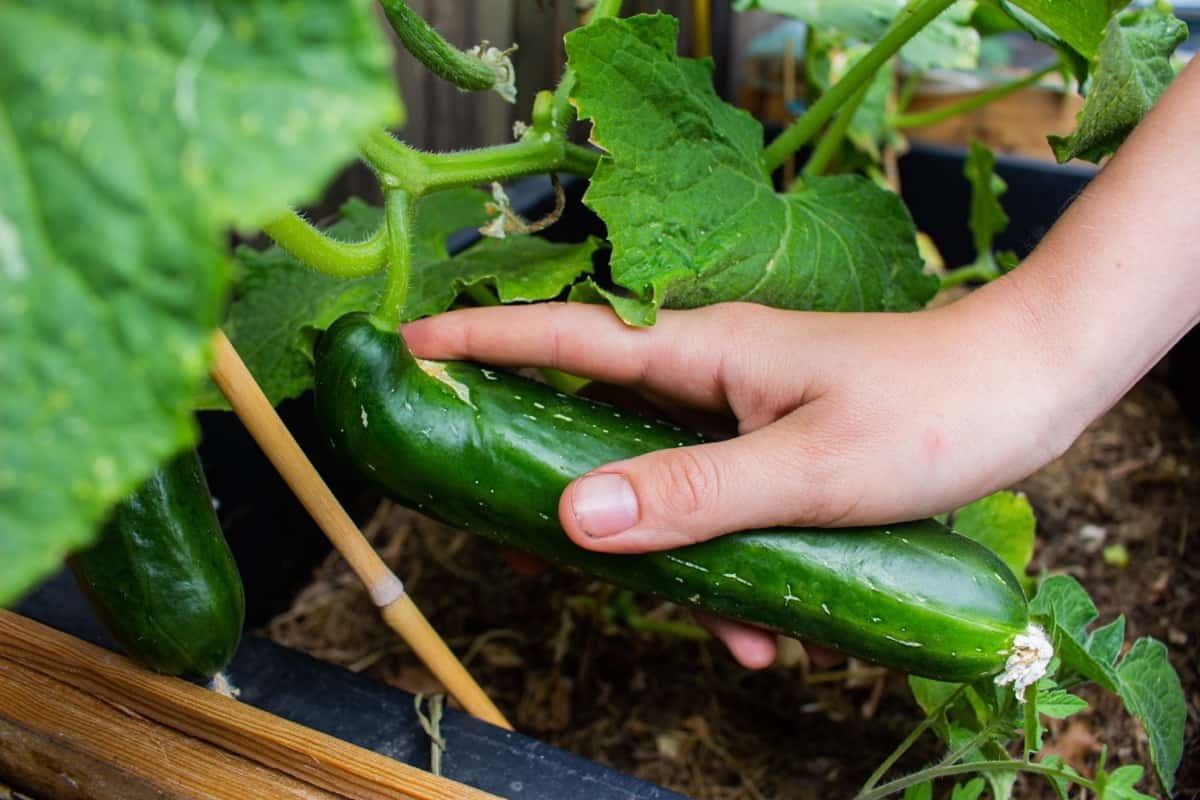
Also, choosing the suitable Cucumber variety for your climate and soil type is key to a successful harvest. Remember to always check for any signs of bitterness in your Cucumbers and adjust your growing practices accordingly. With some patience and care, you’ll soon enjoy succulent summer salads filled with freshly harvested sweet and juicy Cucumbers from your garden.
How to Prevent Bitter Cucumbers
What Causes Bitter Cucumbers?
Bitter Cucumbers can be a disappointment for gardeners and consumers alike. Cucumber bitterness is caused by cucurbitacin, which naturally occurs in the Cucumber plant. Not all Cucumber plants produce high levels of this compound. Dry conditions are one of the most common causes of bitter Cucumbers. Insufficient moisture in the soil can stress the plant and cause it to produce more cucurbitacin, which gives Cucumbers their bitter taste. If you live in hot summers, try planting your seeds earlier in spring so they have plenty of time to grow before temperatures soar.
One of the reasons Cucumbers can turn out to be bitter is poor soil. When a Cucumber grows in nutrient-deficient soil, it becomes stressed and produces unpleasant-tasting fruits. Poor soil means insufficient minerals or nutrients for the plants to thrive. The lack of essential nutrients inhibits proper growth, making the plant more susceptible to diseases and pests. Additionally, when Cucumber plants grow in poor soil conditions, they produce fewer leaves, resulting in smaller fruits with a higher concentration of compounds that cause bitterness.
In case you missed it: How to Build a Trellis for Cucumbers: A Step-by-Step Planting Guide for Beginners
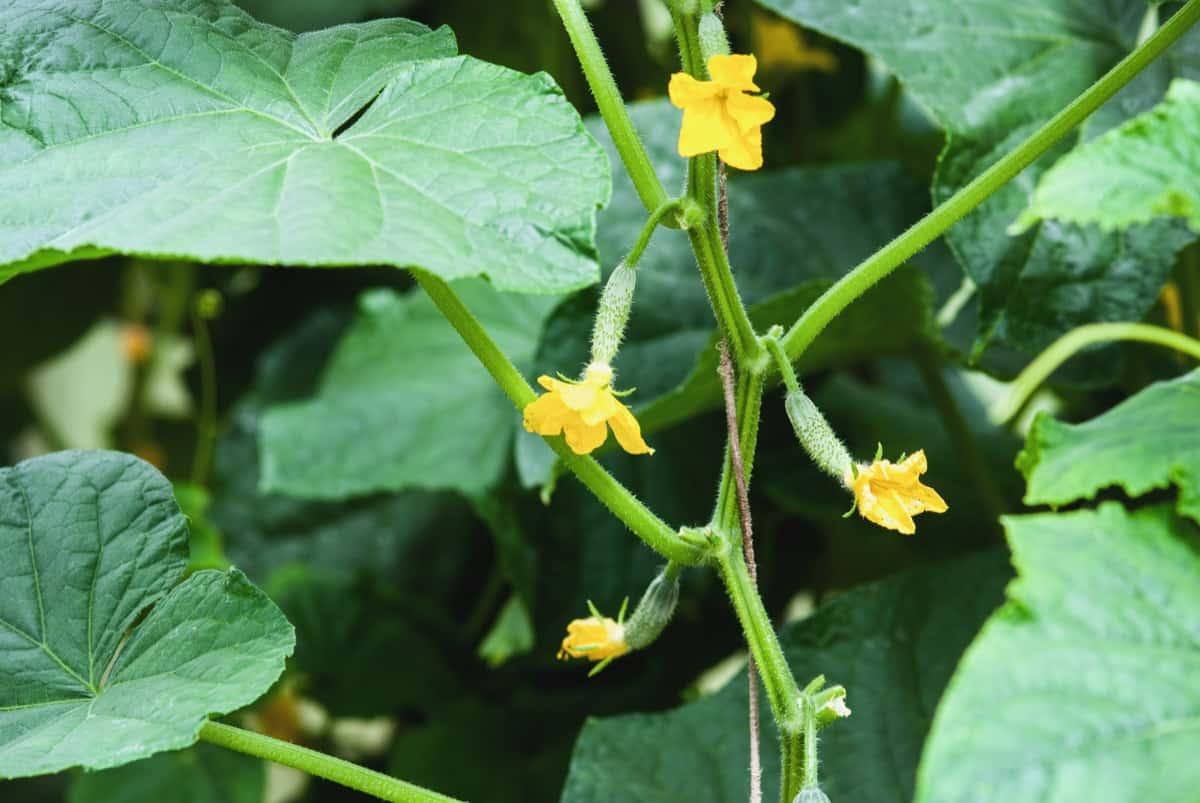
When too many Cucumber plants grow close together, they compete for resources like sunlight, water, and nutrients from the soil. Some of the Cucumbers may not get enough of these essential elements, which can cause them to become bitter. Additionally, overcrowded Cucumber vines can increase humidity levels in your garden, leading to fungal diseases that further damage their quality. Lack of sunlight is another factor that can cause Cucumbers to taste bitter. Cucumbers thrive in warm and sunny conditions, so their growth can be stunted when they don’t get enough sunlight.
When a Cucumber plant doesn’t receive the necessary sunlight, it produces more cucurbitacin as a defense mechanism against pests and other threats. This increase in bitterness can make the Cucumber less palatable for humans. Some Cucumber varieties are inherently bitter, while others have been bred specifically for their sweet taste. Cross-pollination with other members, like squash or gourds, can result in bitter-tasting Cucumbers. This happens because these related plants also contain high levels of the bitter compound and can easily transfer it to nearby Cucumber plants through pollination.
Tips to Avoid Bitter Cucumbers
Water Them Right
Watering is a crucial aspect of growing Cucumbers, as it can affect their taste and texture. When it comes to watering your Cucumber plants, there are a few things you need to keep in mind. Firstly, ensure that your Cucumber plants receive enough water. Cucumbers require consistent moisture throughout the growing season, so do not let them dry out completely. However, avoid overwatering them as this can lead to root rot and other fungal diseases.
Try to water your Cucumbers at the base rather than from above. Watering from above can cause the leaves and stems of the plant to become damp for prolonged periods, increasing disease susceptibility. It’s best practice when watering Cucumbers at the base with drip irrigation or a hose set on low pressure.
In case you missed it: Guide to Growing Cucumbers in California: In Containers, Backyard, Summer, and Winter
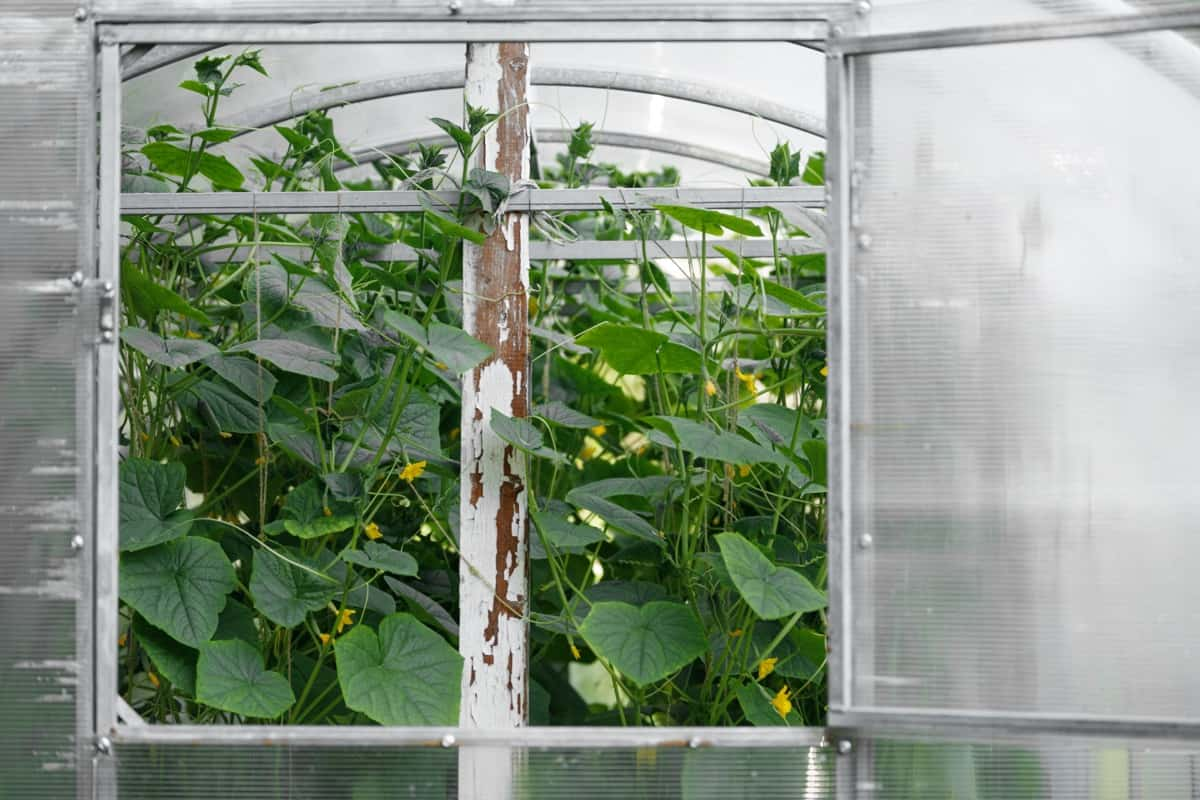
Ensure you give your plants enough time between each watering session, usually every 2-3 days depending on weather conditions. Check soil moisture before deciding whether or not more water is needed. Give your Cucumber plants adequate water without overdoing it; consider watering them at their bases instead of from overhead; don’t forget the timing between sessions, either.
Use a Rich Growing Medium
One way to ensure that your Cucumbers grow sweet and juicy is by using a rich growing medium. This means providing your plants with the nutrients they need to thrive. A healthy growing medium should be able to retain moisture, promote root growth, and provide essential minerals for the plant’s development. Add organic matter, such as compost or manure, to your soil.
Another option is to use a high-quality potting mix specifically designed for vegetable gardening. These mixes often contain perlite or vermiculite, which helps with drainage and water retention. When preparing your soil, ensure its loose enough so roots can easily penetrate it. A tight soil will hinder the plant’s ability to absorb nutrients properly.
You can also consider using fertilizer during the growing season if you notice any nutrient deficiencies in your plants. However, always follow instructions carefully, as over-fertilizing can harm your plants. Using a rich growing medium, you’ll provide your Cucumber plants with everything they need for optimum growth and delicious fruit.
Add Mulch
Adding mulch to your Cucumber plants is another way to improve the quality and sweetness of their fruits. Mulching helps regulate soil temperature, retain moisture, and suppress weeds competing for water and nutrients with your Cucumbers. When choosing the right mulch material, you have several options, such as straw, grass clippings, leaves, or compost. Apply a 2-3 inches layer around each plant’s base while avoiding direct contact with its stem. Mulch also decomposes over time, adding organic matter back into the soil and enhancing soil fertility.
In case you missed it: 16 Common Cucumber Plant Problems: How to Fix Them, Solutions, and Treatment
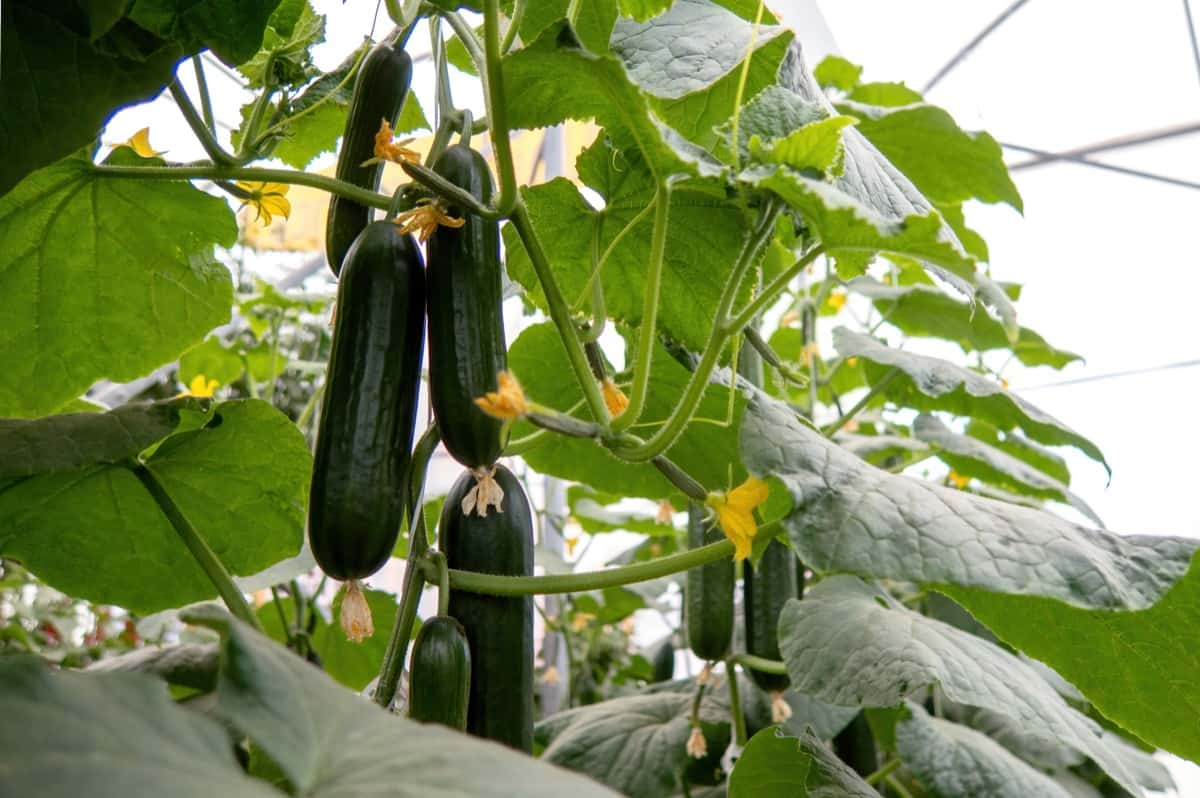
This allows your Cucumbers’ roots access more essential nutrients for growth and fruit production. In addition to being beneficial for plant growth, using organic materials like straw or leaves help reduce waste by recycling natural resources from your garden back into itself. It’s an eco-friendly solution that benefits not only your crop but also the environment in general. Mulching is a simple yet effective method that can increase the yield of sweet and juicy Cucumbers while conserving water usage and reducing weed pressure on your garden bed.
Protect from High Temperatures
Cucumbers are known for their sensitivity to high temperatures. When the temperature exceeds 32°C, it can lead to a bitter taste in Cucumbers. It’s essential to protect them from such heat as much as possible. Provide shade for the plants during the hottest parts of the day. You could use shade cloth or even plant taller crops like Corn or Sunflowers around them for some natural shade. Another option is planting your Cucumber seeds early enough to mature before high temperatures. This will ensure you get sweet and juicy fruits before they become bitter due to excessive heat.
Harvest Them on Time
Harvesting Cucumbers on time is crucial to avoid bitterness and enjoy sweet and juicy fruits. Once they reach their mature size, they should have a consistent green color without any yellow spots or streaks. Next, give them a gentle squeeze if they’re firm but slightly flexible, then they’re ready for harvesting.
When picking your Cucumbers, use scissors or pruning shears to cut them from the vine rather than pull them off by hand. If you notice any overripe or rotting Cucumbers on the vine during harvest time, remove them immediately, as they can spread disease and attract pests. Harvesting your Cucumbers at the right time and handling them carefully during harvest will increase your chances of growing sweeter and juicier fruits.
Grow with Sunflowers
Growing Cucumbers with sunflowers is an effective way to produce sweeter and juicier fruits. Sunflowers are not only beautiful, but they also provide several benefits to Cucumber plants. Sunflowers can act as a natural trellis for the Cucumber vines. This allows the Cucumbers to grow vertically instead of sprawling on the ground, which can lead to bitter fruit due to uneven moisture distribution.
In addition, sunflowers attract pollinators such as bees and butterflies that help fertilize the flowers on your Cucumber plants. Proper pollination leads to higher yields of better-quality fruit. Planting sunflowers next to your Cucumbers creates a beneficial microclimate that provides shade during hot summer days while allowing enough sunlight for optimum growth conditions. Growing Cucumbers with sunflowers are easy to ensure sweet and juicy fruits while adding beauty and biodiversity to your garden space.
Right Spot and Spacing
Choosing the right spot and spacing is crucial for growing sweet and juicy Cucumbers. Cucumbers need a lot of sunlight, so finding a spot that receives at least 6 hours of direct sunlight daily is important. Ensure you pick an area with good drainage, as Cucumbers don’t like sitting in water. When it comes to spacing, Cucumber plants should be planted at least 3 feet apart from each other to allow them enough room for growth.
In case you missed it: Best Season to Grow Cucumber at Home in India: In Pots, Terrace, Apartment Balcony, and Backyards
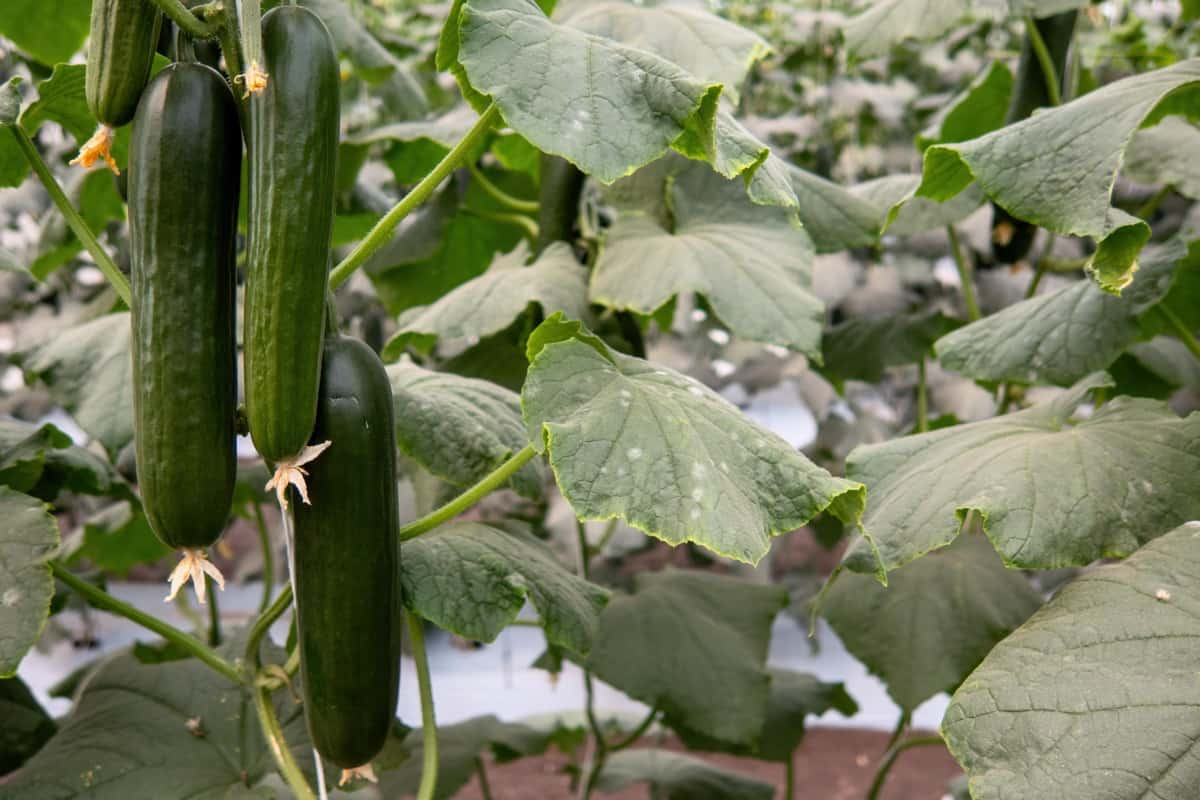
They’ll compete for nutrients and light if they’re too close together, resulting in bitter-tasting fruit. Another thing to consider when planting Cucumbers is their proximity to other plants. Avoid planting them near Potatoes or Melons, as they share common pests and diseases that could harm your crop. Additionally, if you’re growing Cucumbers vertically on trellises or cages, ensure enough space between the plant and support structure.
This will help ensure proper air circulation, reducing the risk of fungal diseases. Choosing the right spot and spacing is essential for successfully growing sweet and juicy Cucumbers. You can avoid bitter fruits by giving them plenty of sunlight, adequate space for growth, and proper distance from other plants while ensuring proper ventilation around vertical supports.
No Frost
Cucumbers are fragile plants, and frost can damage them easily. Cucumber leaves start to wilt when the temperature drops below 10°C and may die if exposed for too long. Therefore, it’s essential to protect your Cucumber plants from frost. One way to avoid frost is by planting Cucumbers after the last risk of frost has passed in spring. However, this isn’t always possible, depending on where you live. In that case, you can cover your Cucumber plants with a cloth or blanket overnight when there’s a chance of frost.
Another option is using plastic covers or cloches over each plant to create a mini-greenhouse effect that traps heat inside and protects against cold temperatures outside. If you’re growing Cucumbers in containers on a balcony or terrace, move them indoors during cold nights or place them near the house walls where they’ll benefit from residual warmth.
Grow Sweeter Varieties
When growing Cucumbers, choosing the right variety is crucial. To avoid bitter Cucumbers, you should grow sweeter varieties specifically bred for taste rather than size or yield. One popular sweet Cucumber variety is Sweet Success, which lives up to its name with a crisp and juicy texture and a mild flavor. Another great option is Tasty Green, which has thin skin and small seeds, making it perfect for snacking. When selecting your Cucumber seeds, check the seed packet for the sweetness level of each variety.
In case you missed it: Best Fertilizers for Cucumber: Homemade, Organic, Liquid, NPK, and Schedule

Conclusion
Growing sweet and juicy Cucumbers is not difficult, but it requires proper care and attention. Remember to protect them from high temperatures, harvest them at the right time, grow with sunflowers for shade, choose the right spot and spacing, water them properly, and add mulch to retain moisture in soil and nutrients.
Additionally, growing sweeter varieties will give you a better chance of producing excellent fruit. Growing Cucumbers can be an enjoyable experience that yields delicious results if given adequate attention. With patience and diligence throughout all stages of growth, from planting to harvesting, you’ll surely have a successful crop in no time.
- How to Grow Hibiscus from Flower
- Plantation Ideas for Home Decoration: A Beginners Guide
- Flower Garden Designs and Layouts for Beginners
- Planting and Spacing Techniques in Papaya: A Beginner’s Guide
- Growing Gold: Essential Techniques for Planting Pineapples
- How to Make Kalanchoe Plant Bushy: Home Remedies and Solutions
- 11 Reasons Why Your Gardenia is Not Blooming: Home Remedies and Solutions
- Eco Elegance: The Guide to Designing a Drought-Tolerant Landscape
- Gardening on a Slope: Strategies for Hillside Landscaping
- Nourish and Flourish: Top Organic Mulches for Thriving House Plants
- Everything You Want to Know about Indian Mogra Flower: Discover Uses and Growing
- Green Thumb Success: Expert Tips for Cultivating Greenhouse Pumpkins All Year Round
- Maximize Growth & Flavor: The Ultimate Guide to Companion Planting in Herb Gardens
- How to Control Rhododendron Problems Naturally: Home Remedies and Organic Ways to Fix Them
- Natural Magic: The Remarkable Benefits of Cinnamon for Plants
- Best Steps to Revive Dying Tulip with Natural and Organic Treatment
- 10 Reasons Why Your Angel Trumpet is Not Blooming: Remedies and Treatment
- How to Fix Periwinkle Leaf and Flower-Related Problems: Natural Remedies and Solutions
- How to Fix Zinnias Leaf and Flower Problems: Discover Natural and Home Remedies
- Organic Steps to Induce Lemon Tree Flowers: A Comprehensive Guide
- Bloom Booster: Crafting the Perfect Homemade Bougainvillea Fertilizer
- Optimizing Growth: A Guide to Applying NPK Fertilizer for Potted Plants
- 10 Best Homemade Fertilizers for Rubber Plant: DIY Recipes and Application Method
- How to Boost Female Pumpkin Flowers: Effective Steps for More Flowers and High Yields
- Transform Your Indoor Garden: Top Benefits of Pink Salt for Houseplants
- 10 Best Homemade Fertilizers for Peacock Plants (Calathea): Easy DIY Guide
- Unlock Blooms: 9 Reasons Why Your Potted Chrysanthemum is Not Blooming
- 8 Reasons Why Your Potted Hibiscus is Not Blooming: Fix it with Simple Solutions
- Unlock Blooms: 9 Key Reasons Your Potted Frangipani Won’t Flower
- 10 Reasons Why Is My Ice Plant Not Blooming: Remedies and Treatment
- 10 Reasons Why My Potted Hydrangea Not Blooming: Treatment and Remedies
- 10 Reasons Why is My Wisteria Not Blooming: Remedies and Treatment
- 10 Reasons Why is My Goldfish Plant Not Blooming: Remedies and Treatment
- Maximize Your Space: Ultimate Guide to Balcony Gardening with Grow Bags
- 10 Reasons Why Your Iris is Not Blooming: Remedies and Treatment
- 10 Reasons Why Your Anthurium Plant is Not Blooming: Treatment and Remedies